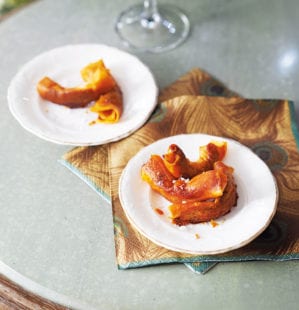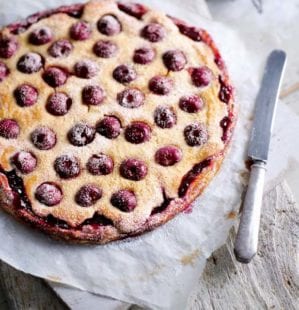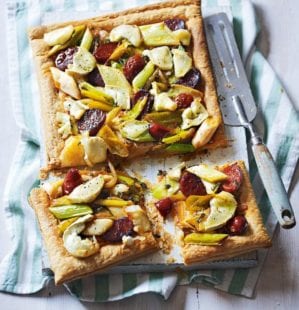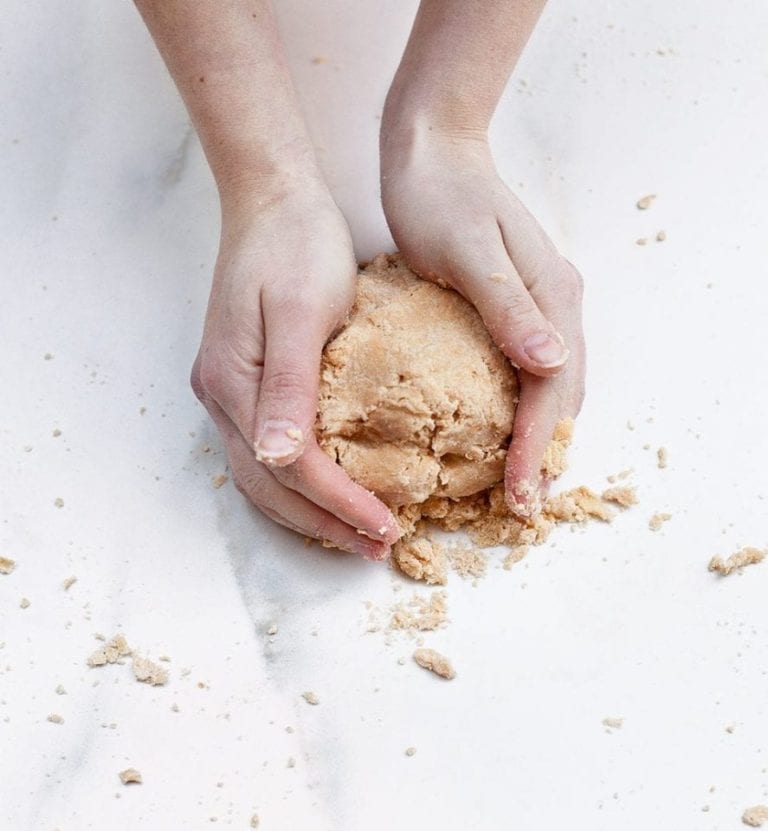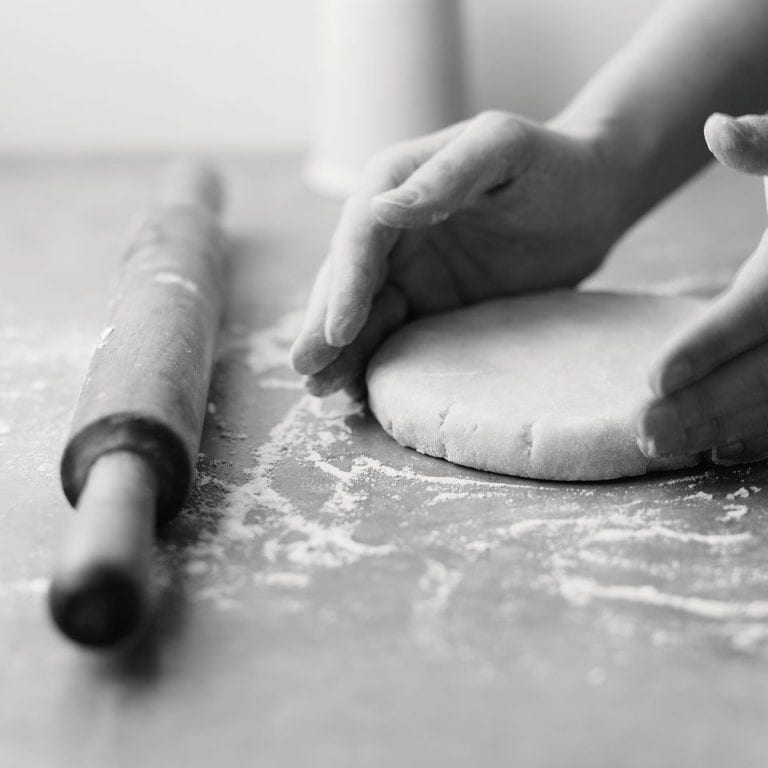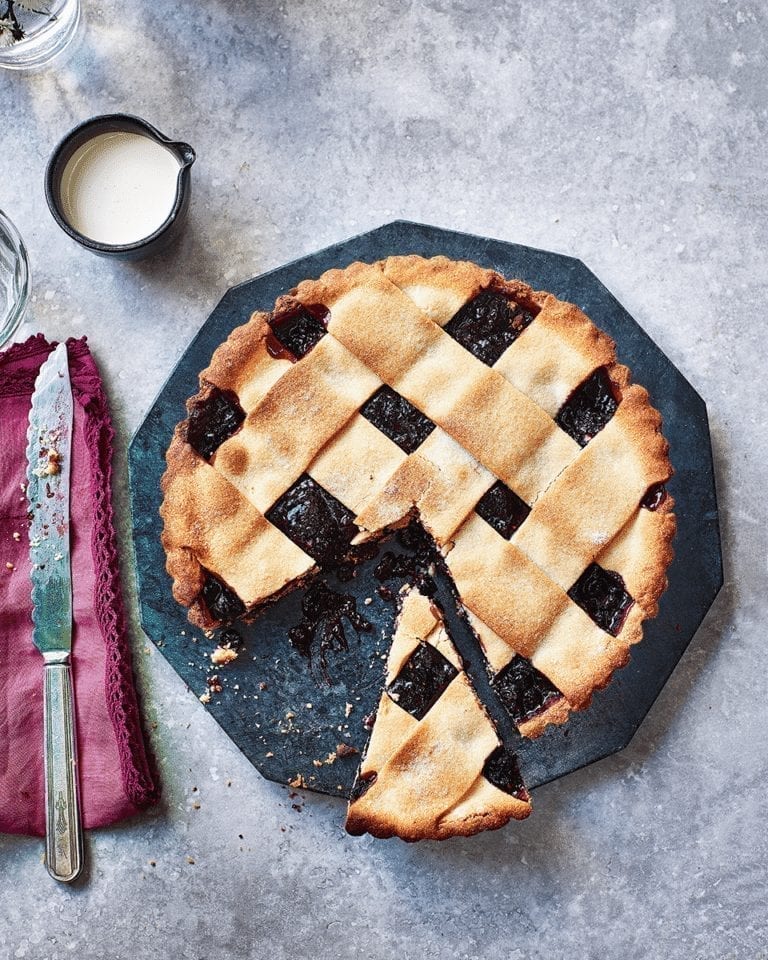How to make foolproof puff pastry
Puff pastry: the pastry that acts as the base of so many of our beloved tarts does have a reputation for being difficult. But there’s really no need to worry about making your own at home with our foolproof guide to making puff pastry.
Once you’ve mastered your puff pastry, you can go on to create homemade sausage rolls, steak pie or Danish pastries.
Or, if you’re looking for pastry to line pies or tarts, you’re looking for shortcrust pastry. We’ve got a recipe for that here.
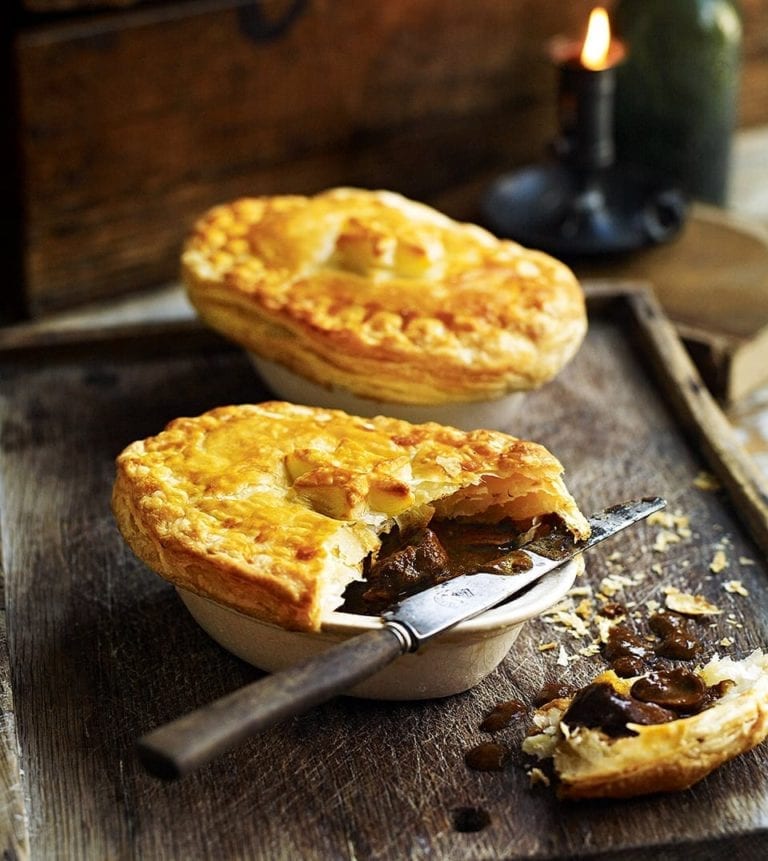
If there’s one thing most people choose to buy ready-made rather than making it from scratch, it’s puff pastry. But there’s really no need to be put off making your own puff pastry at home. All it requires is time, patience – and absolutely no faffing when it comes to rolling and folding, as you don’t want the pastry to warm up. It may take a few goes to achieve perfection, but the results are worth the wait.
Puff pastry troubleshooting
Here are some common problems you might find when making puff pastry and how to go about fixing them. As with all recipes, read it all the way through, including the tips, before you begin.
Problem 1: What do I do if my puff pastry is too tough?
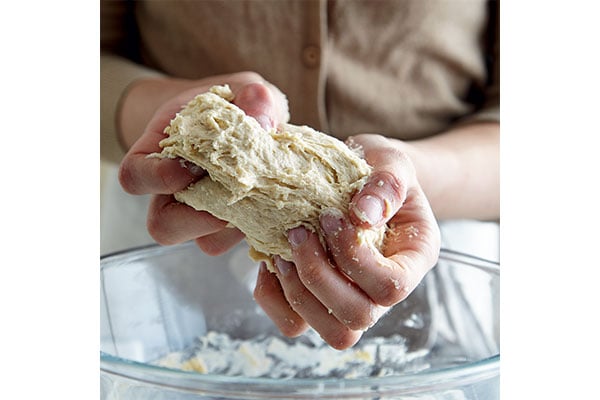
The fix:
- Handle the dough as gently (and as little) as possible to minimise the development of gluten, which will make it tough.
- Use as little flour as possible when rolling and folding.
- In step 2, add just enough water to bring the dough together, then combine quickly to distribute it evenly.
Problem 2: What do I do if my puff pastry is too greasy?
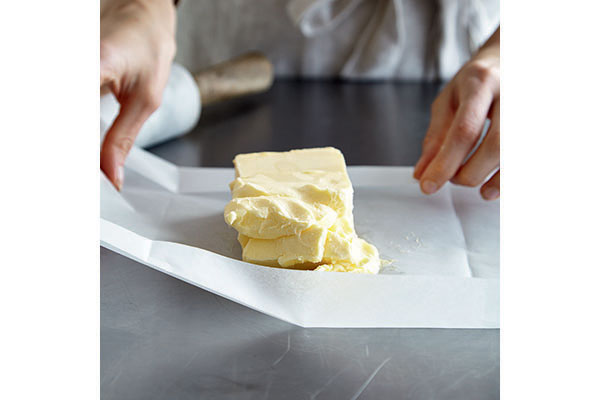
The fix:
- The butter needs to be at the right temperature: chilled, but not icy cold (or too warm). Keep it chilled and return the pastry to the fridge the moment it starts to feel soft or sticky.
- If the butter starts to melt and seep through the pastry when you are rolling and folding, lightly dust the area with a little flour, then chill for a bit.
- Butter that’s too cold can also cause greasy pastry. If you roll the dough with overly cold, hard butter, it may break through the layers, causing it to become greasy when baked and contributing to an uneven rise.
Problem 3: What happens if my puff pastry rises unevenly?
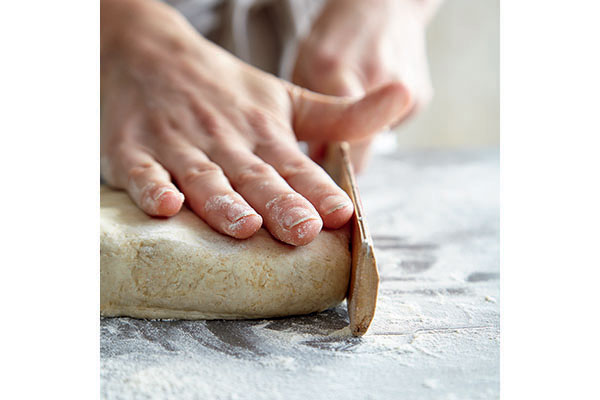
The fix:
- The cause could be uneven rolling and folding. Use a palette knife or ruler to keep corners square (steps 4-7) and the sides straight. Make even strokes when rolling out the pastry. Don’t be tempted to do more than 6 or 7 roll-and-folds, as the layers will become too thin and the butter may seep out of the sides, causing an uneven rise.
Foolproof puff pastry recipe
Makes 640g, enough for 1 tart
Hands-on time 1 hour, plus 2-3 hours chilling
You will need:
- 250g plain flour, plus extra to dust
- 1½ tsp salt
- 140-150ml cold water
- 250g unsalted butter, cool but not fridge-cold
Make-ahead: Make the pastry up to 3 days ahead and keep wrapped in cling film in the fridge. Take out of the fridge 10 minutes before rolling out. Alternatively, freeze the well wrapped pastry for 1 month.
Method:
1. Sift the flour and salt into a large mixing bowl. Measure 140ml water into a jug. Melt 40g of the butter and stir into the water.
2. Pour the water and butter mixture onto the flour in the bowl and quickly combine using a table knife or soup spoon. If there’s any remaining flour in the bowl, move the clumped dough to one side and add a tiny splash more water to the flour. Using your hands, gently and with minimal handling bring it all together into a smooth dough [A]. Wrap in cling film and chill in the fridge for 30 minutes.
STEP A
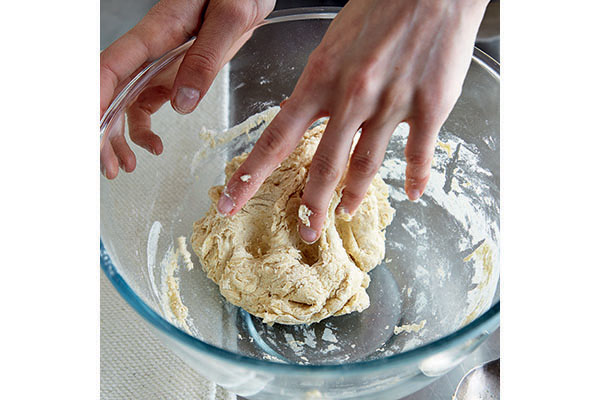
3. Meanwhile, cut 2 sheets of baking paper into 25cm x 20cm rectangles. Put the remaining 210g butter in the centre of one sheet, cover with the other sheet, then fold the edges over all around to form an A5-size (21cm x 15cm) parcel. Turn over then, using a rolling pin, roll out the butter inside the parcel to make an even A5 rectangle [B]. Roll in all directions, turning the parcel round occasionally to get the butter to reach each edge. Chill for at least 15 minutes so the butter is the same temperature as the dough.
STEP B
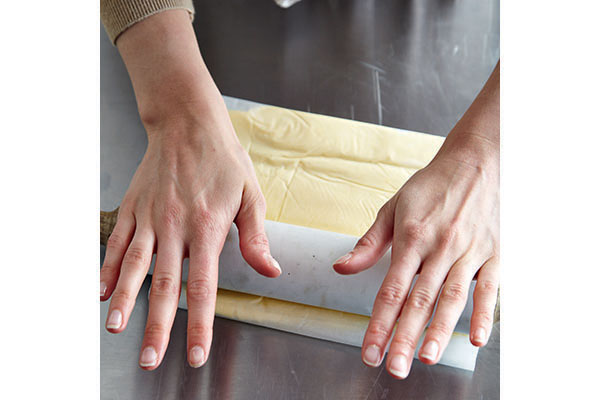
4. Before you start rolling the dough, remember you should always have a short edge at the bottom and turn it in the same direction. On a lightly floured surface, gently roll out the chilled dough into a 30cm x 20cm rectangle. Use a long ruler or palette knife to tamp the edges and keep them straight and the corners sharp [C]. Unwrap and remove one sheet of baking paper from the butter, then put it, unwrapped-side down, on the bottom two thirds of the pastry, leaving a 2.5cm pastry border at the 3 edges. Peel off the remaining sheet of baking paper from the butter [D].
STEP C
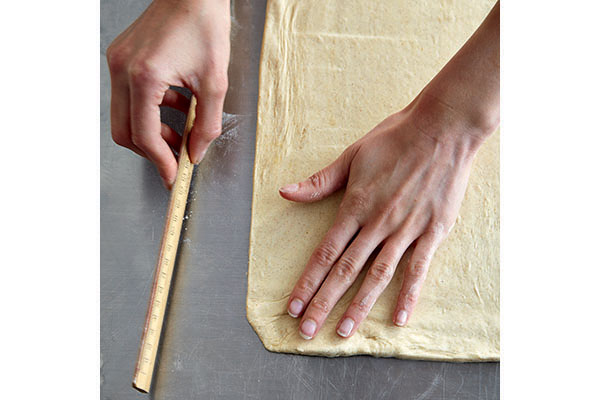
STEP D
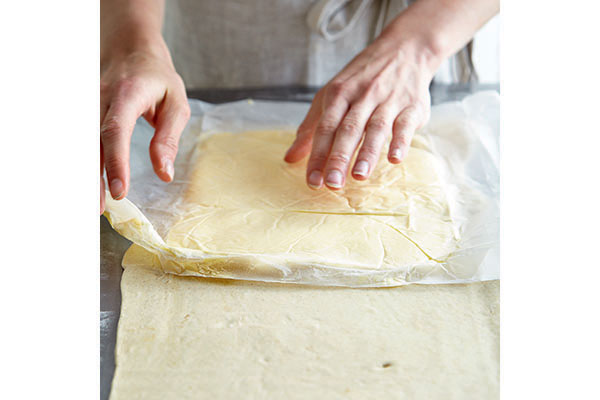
5. Fold the top third of the pastry down over the butter, then fold the bottom third up (pastry and butter), like it’s a letter for an envelope [E]. Lightly press the edges together to encase the butter. Turn the pastry a quarter-turn anticlockwise [F] and chill for 10 minutes.
STEP E
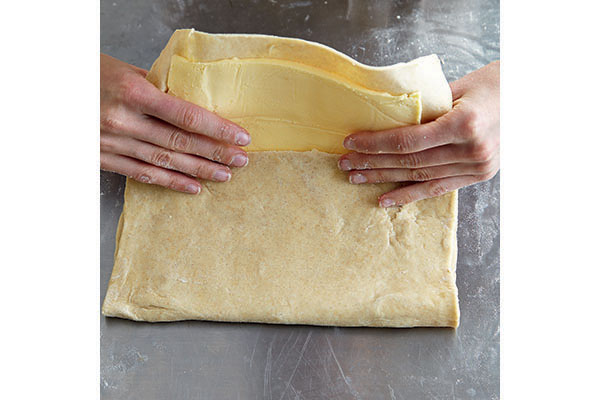
STEP F
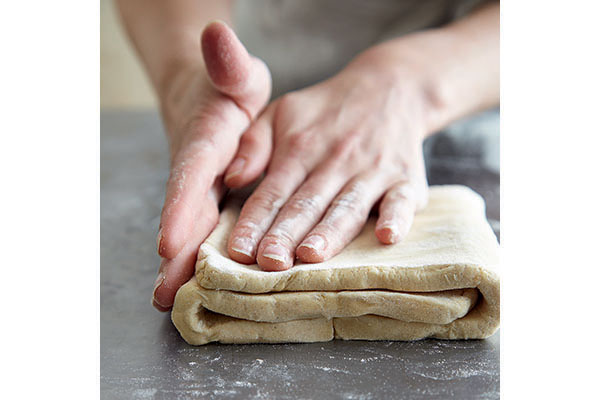
6. Dust the work surface with a little more flour. Roll the pastry (and butter) out to the same size rectangle as before [C] and repeat, folding the top third down and the bottom third up [E]. Brush any excess flour from the pastry and double-wrap in cling film. Chill in the freezer for 15 minutes, or in the fridge for 30 minutes. (Don’t freeze for longer than 15 minutes or the butter will be too hard and may break through the layers.)
7. With the short edge towards you, repeat the rolling, folding turning and chilling 4 more times for a total of 6, chilling the pastry between each roll-and-fold. The pastry will be ready after the final chilling.
Nutritional info, per 100g: 431kcals, 32.8g fat (21.1g saturated), 3.9g protein, 28.8g carbs (0.6g sugars), 0.3g salt, 1.6g fibre
More tips for puff pastry success
- Always roll out the pastry in the same direction and give it the quarter-turn in the same direction, otherwise the layers won’t be even.
- If the butter gets too soft, stop what you’re doing, note which stage you’re at (you’ll forget if you don’t write it down), then chill the pastry for 30 minutes.
- If you still have streaks of butter running through the pastry after the sixth roll and fold (step 7), you can do a seventh, but no more.
Subscribe to our magazine
Food stories, skills and tested recipes, straight to your door... Enjoy 5 issues for just £5 with our special introductory offer.
Subscribe
Unleash your inner chef
Looking for inspiration? Receive the latest recipes with our newsletter
